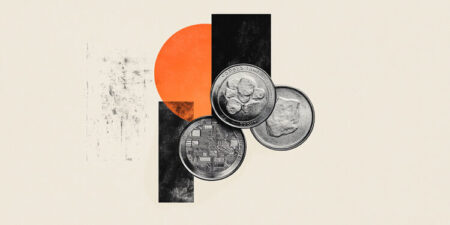- GBP/USD gains ground to near 1.3545 in Friday’s early European session.
- Traders trim bets of rate cuts by the Fed in September after hotter US July PPI data.
- The UK economy posted a surprise 0.3% growth in the three months to June.
The GBP/USD pair gathers to around 1.3545 during the early European session on Friday, bolstered by a weaker US Dollar (USD). Additionally, the stronger-than-expected UK economic data underpins the Pound Sterling (GBP) against the Greenback. Markets might turn cautious later on Friday as traders await the release of the US July Retail Sales report.
Traders adjusted their expectations for interest rate reductions from the US central bank after the latest soft data on US jobs and Consumer Price Index (CPI) inflation reports. Rising bets of a US Federal Reserve (Fed) rate cut in September weigh on the Greenback. However, hotter-than-expected Producer Price Index (PPI) inflation data released on Thursday prompted traders to trim wagers on rate cuts by the Fed in September.
The chance of a 25 basis points (bps) cut by the US central bank retreated slightly after the PPI figures, according to the CME FedWatch tool. Fed funds futures traders are now pricing in nearly a 92% chance of a 25 basis point (bps) cut next month, down from a 96% possibility before the PPI data was released.
The upbeat UK Gross Domestic Product (GDP) report provides some support to the Cable. The UK economy expanded 0.3% QoQ in the second quarter (Q2) of 2025, compared to a 0.7% growth in Q1, the Office for National Statistics (ONS) showed Thursday. This figure came in better than the expectation of a 0.1% expansion in the reported period. On an annual basis, the UK GDP grew 1.2% in Q2 versus 1.3% prior. This reading was above the market consensus of 1.0%.
Traders will take more cues from the US Retail Sales later on Friday. This report could offer some hints about the US interest rate outlook. In case of a hotter-than-expected outcome, this could lift the Greenback and create a headwind for the major pair. The Retail Sale in the US is expected to show an increase of 0.5% in July.
Pound Sterling FAQs
The Pound Sterling (GBP) is the oldest currency in the world (886 AD) and the official currency of the United Kingdom. It is the fourth most traded unit for foreign exchange (FX) in the world, accounting for 12% of all transactions, averaging $630 billion a day, according to 2022 data.
Its key trading pairs are GBP/USD, also known as ‘Cable’, which accounts for 11% of FX, GBP/JPY, or the ‘Dragon’ as it is known by traders (3%), and EUR/GBP (2%). The Pound Sterling is issued by the Bank of England (BoE).
The single most important factor influencing the value of the Pound Sterling is monetary policy decided by the Bank of England. The BoE bases its decisions on whether it has achieved its primary goal of “price stability” – a steady inflation rate of around 2%. Its primary tool for achieving this is the adjustment of interest rates.
When inflation is too high, the BoE will try to rein it in by raising interest rates, making it more expensive for people and businesses to access credit. This is generally positive for GBP, as higher interest rates make the UK a more attractive place for global investors to park their money.
When inflation falls too low it is a sign economic growth is slowing. In this scenario, the BoE will consider lowering interest rates to cheapen credit so businesses will borrow more to invest in growth-generating projects.
Data releases gauge the health of the economy and can impact the value of the Pound Sterling. Indicators such as GDP, Manufacturing and Services PMIs, and employment can all influence the direction of the GBP.
A strong economy is good for Sterling. Not only does it attract more foreign investment but it may encourage the BoE to put up interest rates, which will directly strengthen GBP. Otherwise, if economic data is weak, the Pound Sterling is likely to fall.
Another significant data release for the Pound Sterling is the Trade Balance. This indicator measures the difference between what a country earns from its exports and what it spends on imports over a given period.
If a country produces highly sought-after exports, its currency will benefit purely from the extra demand created from foreign buyers seeking to purchase these goods. Therefore, a positive net Trade Balance strengthens a currency and vice versa for a negative balance.
Read the full article here















